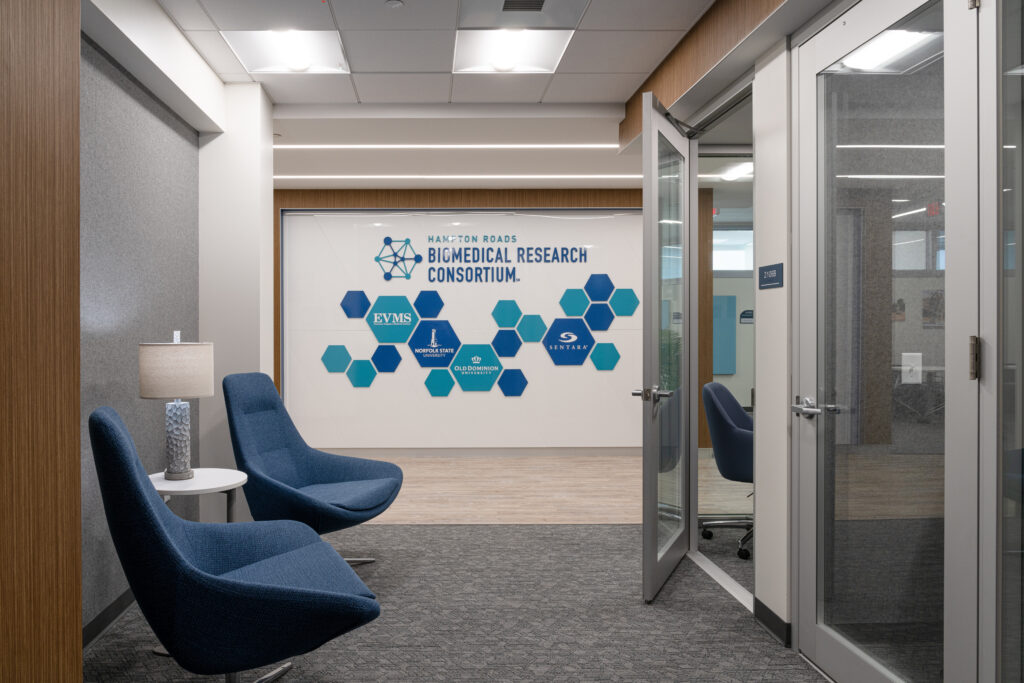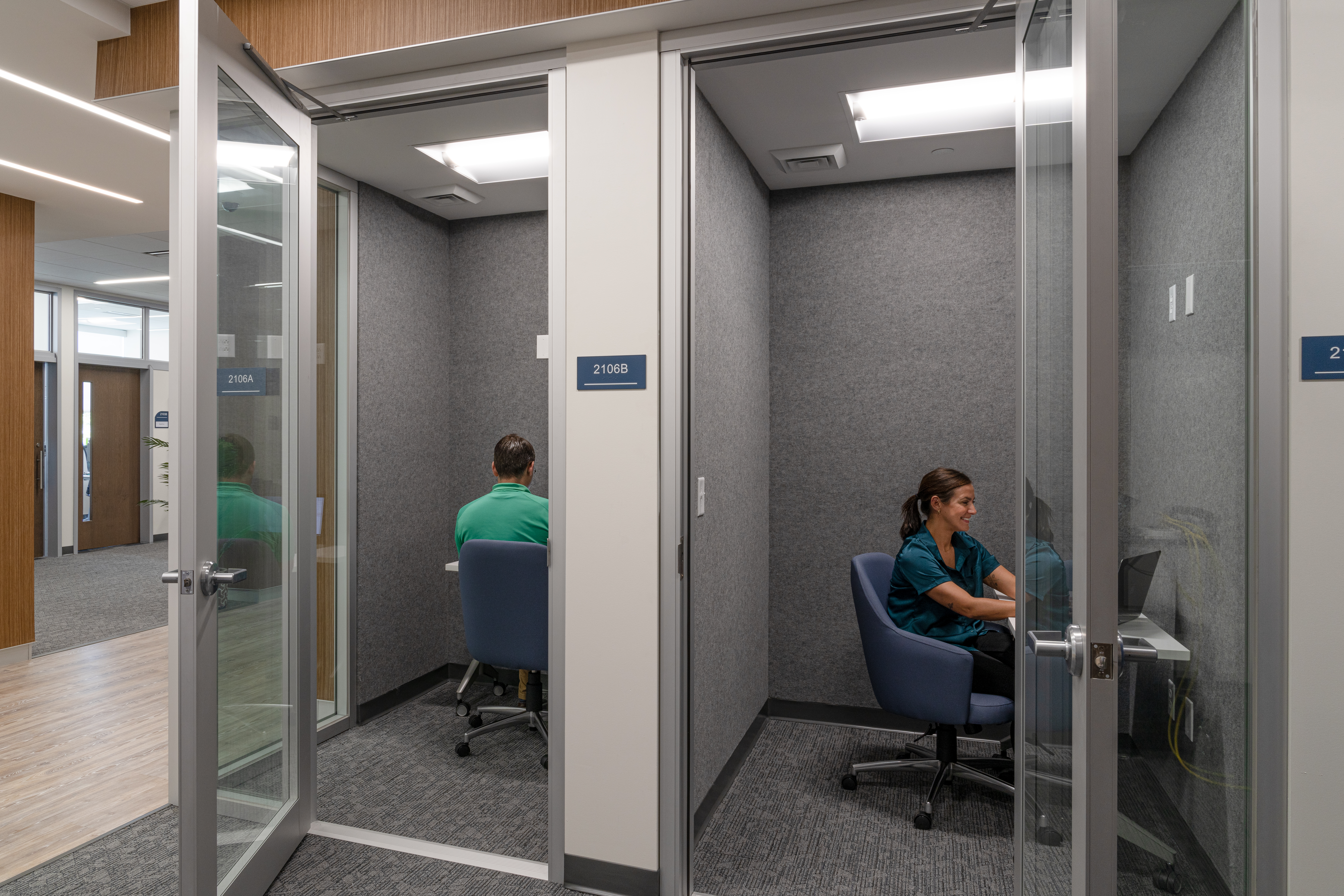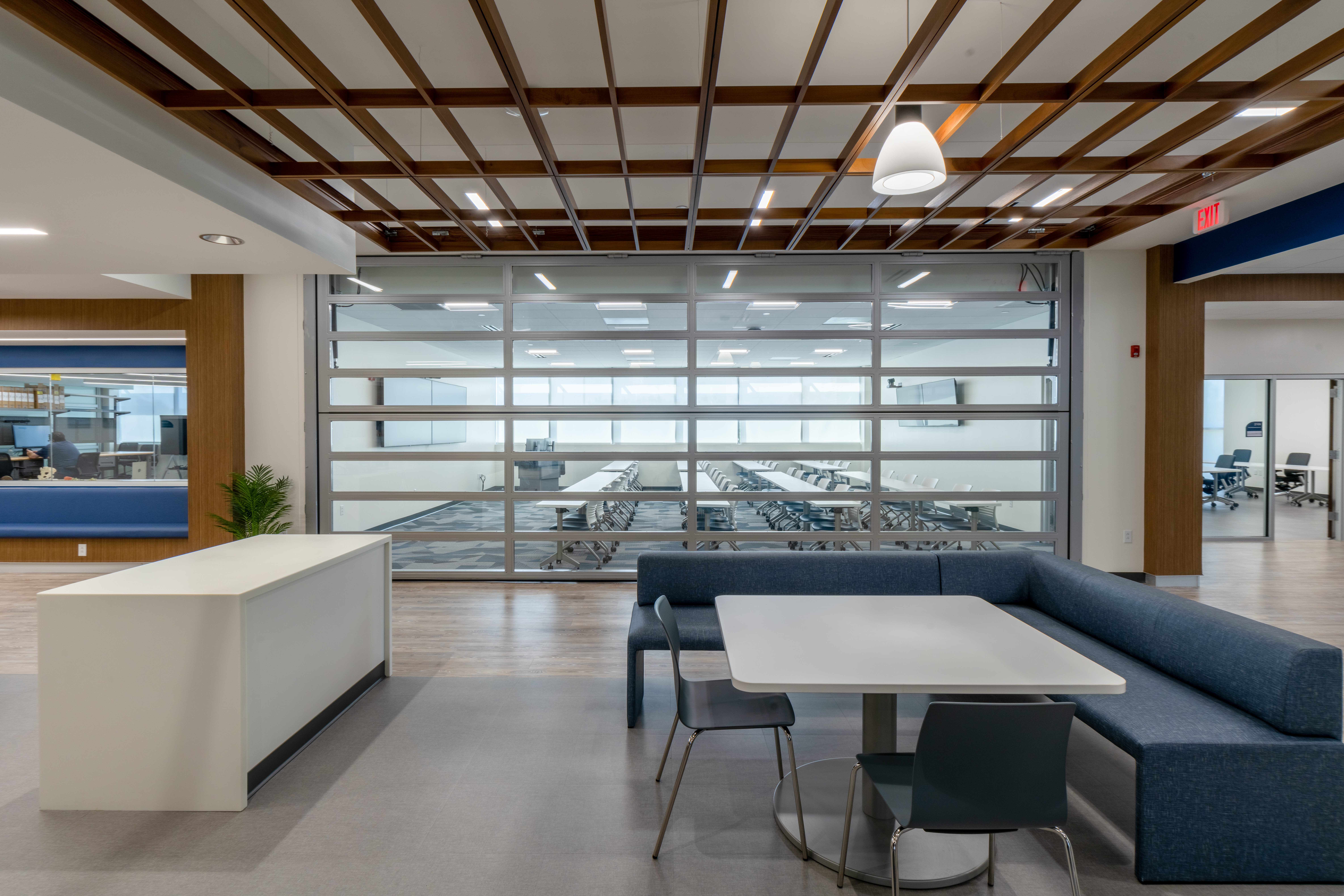RRMM Designs Hampton Roads Biomedical Research Consortium.

Higher Education
If you’ve spent enough time in Hampton Roads, you’ve most likely realized the abundance of hospitals and medical facilities. According to the Hampton Roads Alliance, 99% of the Hampton Roads population lives within 25 minutes of hospital care. Virginia is ranked second overall among states as a top performer for patient safety in the Fall 2022 Leapfrog Group Hospital Safety Grade. If you’re seeking medical care, you’re in good hands in Hampton Roads. Partly contributing to these statistics is the continued investment in biomedical research throughout the region. Programs like the Hampton Roads Biomedical Research Consortium (HRBRC) work to address health disparities, jump start scientific research, and advance bio-health development and innovation.
Contracted by Old Dominion University (ODU), RRMM Architects designed the headquarters for HRBRC. This is a state-sponsored partnership between Old Dominion University, Eastern Virginia Medical School, Sentara Healthcare, and Norfolk State University. The Consortium was funded by Virginia lawmakers in 2020 to promote emerging research and economic drivers in the region, while simultaneously working to address healthcare inequity and disparities. The HRBRC consists of scientists, researchers, community leaders, clinicians, and other healthcare professionals in Hampton Roads.
The architectural and interior design team at RRMM worked hand-in-hand with the Consortium Director and stakeholders from Old Dominion University to renovate existing space and create this centralized location for biomedical collaboration among cutting-edge technology.
“This project provides a physical space to support the initiative of supplying biomedical research to the region, and in turn, helps put ODU, EVMS, NSU and Sentara at the very forefront of innovation and new technologies,” says Bill Boyce’s RRMM’s Director of Higher Education Design. “There is a uniqueness to a consortium like this, bringing the best and brightest to collaborate, solve real-world problems, and serve the role of catalyst for emerging research and economic drivers.”
The 11,500 SF headquarters is located on the second floor of the Tri-Cities campus, which is an off-site location of ODU that conveniently serves Suffolk, Portsmouth, and Chesapeake residents. The HRBRC hosts state-of-the-art labs including a HIPAA (Health Insurance Portability and Accountability Act) lab, a 5G Digital Living lab, a Prototyping and Integration lab, and an AI & Analytics lab. Also included are research collaboration zones, offices, a flexible seminar space, and individual work pods.

The technology for this facility is incredibly specialized. A digital anatomy printer is housed in the Prototyping and Integration Lab. This printer can quickly and affordably create replicated human tissue for biomedical training.
The structural designer had to do additional analyses and inspections than are traditionally required because of the sheer weight of this specialized equipment. The 3D printer was so oversized for traditional moving methods that the team had to take off the existing atrium railing so that the printer could be lifted in.
The programming for this project differed from other projects in that there was more collaboration between ODU and stakeholders. A bigger project budget led to bigger ideas.
The design team relied heavily on 3D renderings so that end users could virtually walk the space and envision the final product. The use of the 3D renderings validated the importance of them; seeing these realistic design representations allowed the client to make adaptations ahead of time that ensured the end result was exactly what they wanted.
When asked what users of the space will enjoy most, the design team noted that they believed the openness of this facility allows for a lot of flexibility that groups will appreciate. The seminar room features a garage door that opens to the break area. This features allows teams to incorporate social aspects into meetings. The large lab contains a sky fold, which creates the ability to utilize the space as is, or as two smaller labs. Even rooms that are physically closed off seem open with the use of windows and glass walls that allow users to see the whole suite when walking through.

The biggest challenge when designing the HRBRC headquarters was the schedule. ODU wanted to complete the project as soon as possible, but the state process and material delays created obstacles. It took over six months to receive the doors for the building.
RRMM is excited to be a part of this new facility that fosters biomedical innovation for our Hampton Roads community. To see more photos of the HRBRC, please visit its project page on our website.
